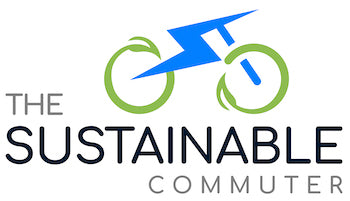
How to Define Sustainable Transportation
Share
In today's world, the concept of sustainability has become increasingly important.
As we strive to create a greener and more sustainable future, one area that requires significant attention is transportation. Sustainable transportation is a key component of achieving this goal, as it considers the environmental, social, and economic impacts of our transportation systems. In this blog post, we will explore the definition of sustainable transportation, discuss its benefits, and outline the key elements that make it a vital part of our sustainable future.
Definition of Sustainable Transportation
Sustainable transportation can be defined as a form of transportation that meets the needs of the present without compromising the ability of future generations to meet their own needs. It takes into consideration the environmental, social, and economic impacts of transportation systems and aims to minimize negative effects while maximizing positive outcomes.
Benefits of Sustainable Transportation
There are numerous benefits associated with sustainable transportation. Some of the key benefits include:
- Environmental Impact: Sustainable transportation helps reduce greenhouse gas emissions, minimize air pollution, conserve natural resources, and promote the use of renewable energy sources. By shifting towards cleaner and more efficient modes of transportation, we can significantly reduce our carbon footprint and mitigate the effects of climate change.
- Social Equity: Sustainable transportation improves accessibility for all individuals, regardless of their socioeconomic status or physical abilities. It supports economic development by connecting people to job opportunities, education, and healthcare services. Additionally, sustainable transportation encourages the use of public transportation, which not only reduces traffic congestion but also provides affordable and reliable transportation options for everyone.
- Economic Benefits: Sustainable transportation provides various economic benefits. Governments often provide financial incentives for individuals and businesses to adopt sustainable transportation practices. For example, tax credits and subsidies are commonly offered to those who purchase electric vehicles or invest in renewable energy sources for transportation. Financial organizations, such as Goldman Sachs, also recognize the investment potential of sustainable transportation and offer funding opportunities for projects in this field. Moreover, sustainable transportation can lead to significant cost savings through fuel efficiency, reducing the expenses associated with transportation. Additionally, the development and implementation of sustainable transportation systems create job opportunities in various sectors, further contributing to economic growth.
Key Elements of Sustainable Transportation
To achieve sustainable transportation, several key elements need to be considered:
- Integrated Land Use and Transportation Planning: Sustainable transportation requires a holistic approach that integrates land use and transportation planning. This involves designing communities that are walkable, bike-friendly, and well-connected by public transportation. By creating compact and mixed-use developments, we can reduce the need for long-distance travel and promote active modes of transportation.
- Efficient and Clean Modes of Transportation: Sustainable transportation emphasizes the use of efficient and clean modes of transportation. This includes promoting public transportation, investing in cycling infrastructure, and encouraging the use of electric or hybrid vehicles. By providing convenient and affordable alternatives to private cars, we can reduce traffic congestion and emissions.
- Renewable Energy Sources: To make transportation more sustainable, it is crucial to transition from fossil fuels to renewable energy sources. This involves promoting the use of electric vehicles powered by renewable energy, such as solar or wind power. Additionally, investing in sustainable biofuels and hydrogen fuel cells can help reduce the environmental impact of transportation.
- Active Transportation: Sustainable transportation encourages active modes of transportation, such as walking and cycling. By providing safe and accessible infrastructure, including sidewalks, bike lanes, and pedestrian-friendly streets, we can promote physical activity and reduce reliance on motor vehicles.
- Technology and Innovation: Technology plays a crucial role in sustainable transportation. Advancements in vehicle technology, such as electric and autonomous vehicles, can contribute to reducing emissions and improving efficiency. Additionally, the use of smart transportation systems, such as real-time traffic management and intelligent transportation networks, can optimize transportation operations and reduce congestion.
Conclusion
Sustainable transportation is an essential part of achieving a greener and more sustainable future. It is a holistic approach that takes into consideration the environmental, social, and economic aspects of transportation. By reducing greenhouse gas emissions, improving accessibility, and providing economic benefits, sustainable transportation can help create a healthier, more equitable, and more prosperous society. To support sustainable transportation, individuals and communities can make conscious choices to use public transportation, walk or cycle whenever possible, and invest in clean and efficient modes of transportation. Additionally, it is important to advocate for government policies and initiatives that promote sustainable transportation practices. Together, we can pave the way for a sustainable transportation system that benefits both present and future generations.
